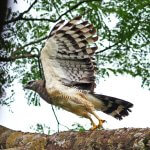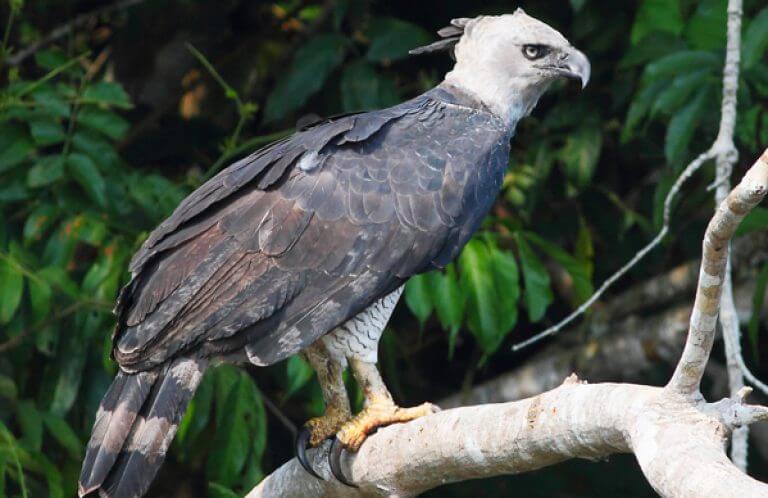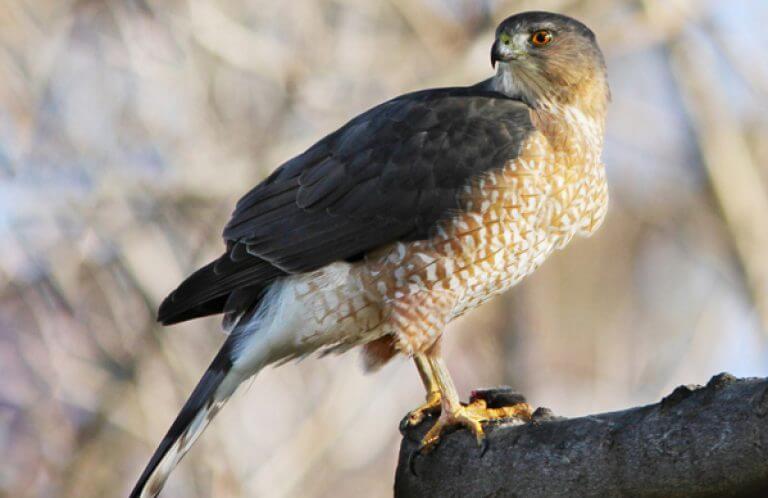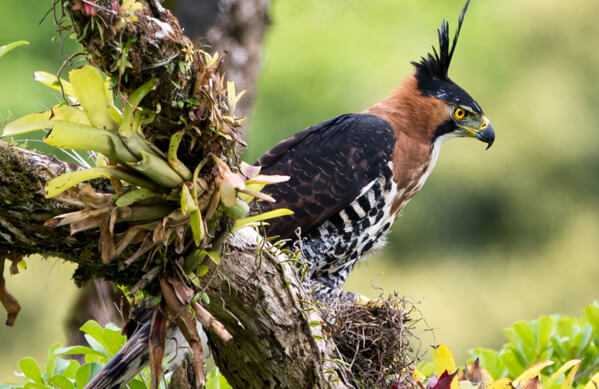About the Crested Eagle
The Crested Eagle is a large forest raptor of Central and South America, nearly the size of the mighty Harpy Eagle, but slimmer and longer-tailed. It is found in similar forest habitats and is equally as scarce across its wide range.
One distinguishing feature of the Crested Eagle is its single pointed crest, in contrast to the Harpy Eagle's wide double crest. The Crested Eagle also occurs in both dark and pale morphs; the dark morph with a blackish head and dark barring below, and the more common pale morph dusky-brown above, with a gray head and breast and reddish barring on its underparts. The juvenile Crested Eagle is pale overall and closely resembles the juvenile Harpy Eagle.
This neotropical eagle is beautifully adapted for hunting in dense forests, with broad, rounded wings and a long tail for agile maneuvering, keen eyesight to detect movements of potential prey in the undergrowth, and powerful legs and feet tipped with sharp talons.
The Crested Eagle's range often overlaps that of the Harpy Eagle's.
Sharing Spaces
In areas where both Crested and Harpy Eagles occur, they co-exist by partitioning food sources, thus avoiding direct competition. Generally, the Crested Eagle feeds on smaller and more diverse prey than the Harpy Eagle, mainly tree-dwelling snakes, small primates, opossums, and birds; while the Harpy Eagle captures larger prey, including sloths and primates. The two species may also use slightly different areas of the forest canopy for breeding and hunting.
This partitioning of resources allows the two eagle species to co-exist peaceably. Once a researcher even observed a female Crested Eagle bringing food to a Harpy Eagle fledgling at its nest!
Songs and Sounds
The Crested Eagle is usually quiet but can produce a variety of calls that include
whistles and screeches.
Listen here:
Female in nest calling to her mate:
Breeding and Feeding
Known for its solitary nature, the Crested Eagle only pairs up during its breeding season. A mated pair builds a bulky stick nest in a tree crotch high in the forest canopy, where the female lays two white eggs. She provides the incubation while her mate supplies them both with food. After hatching, both parents bring food to the nest, although the female is the only parent that feeds the chick (only one usually survives) and keeps the nest clean. The chick can stand up after about a month, begins to feed itself after another month and a half, and fledges after three to four months. Even after fledging, the chick stays nearby, as it's still dependent on its parents for food. It remains dependent on its parents for up to a year and a half, eventually attaining independence. Due to this slow maturation rate, Crested Eagles nest only once every 2-3 years.
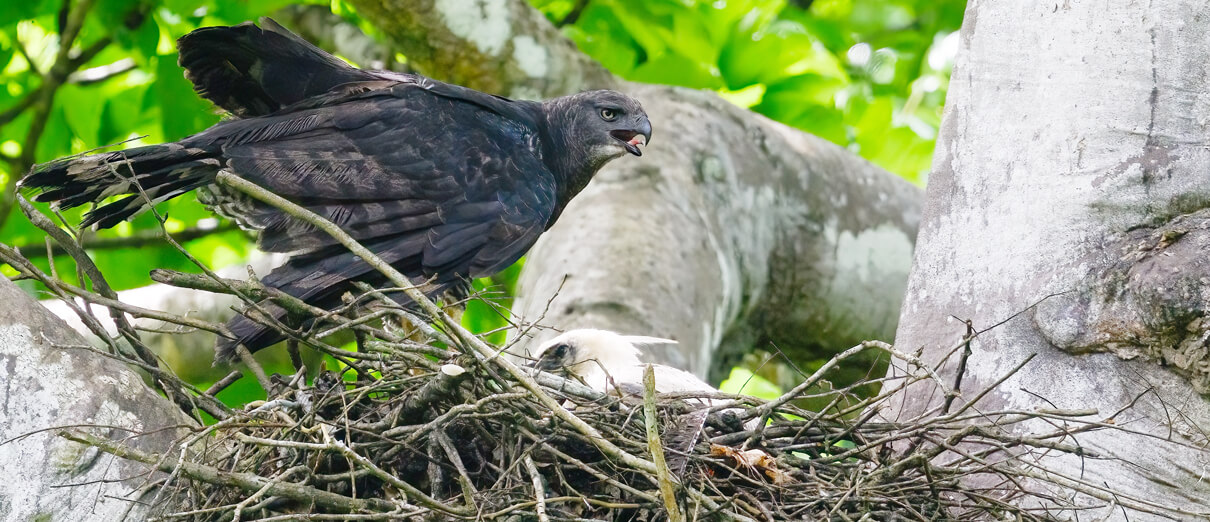
The Crested Eagle feeds largely on tree-dwelling mammals such as smaller monkey species, opossums, and Kinkajous; larger birds such as guans and curassows; and snakes and other reptiles such as iguanas. Like North American accipiters such as the Cooper's Hawk and other tropical raptors such as the Ornate Hawk-Eagle, the Crested Eagle has a stealthy hunting style, often perching quietly for long periods before surprising its prey with a quick strike.
Region and Range
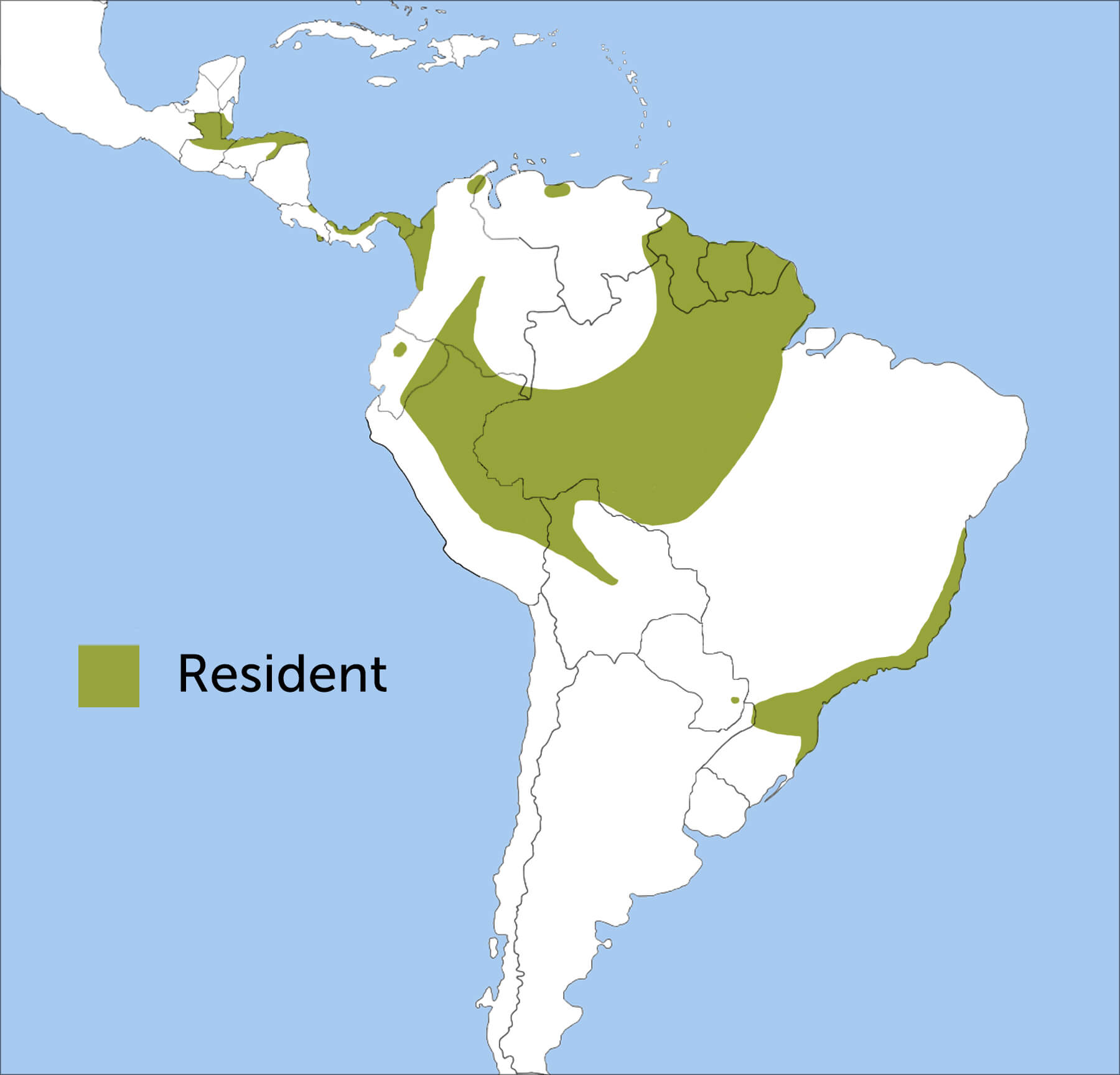
The Crested Eagle has an extensive range but sparse distribution, found from southern Mexico south into Colombia, east to French Guiana, and south to central Bolivia and southern Brazil. It was once found across Brazil, but due to deforestation is now confined almost exclusively to the Amazon basin in that country.
Conservation
The Crested Eagle is rare throughout its range, and is probably declining due to habitat loss. It requires large areas of forest with big, healthy trees in order to conserve healthy populations.

Help support ABC's conservation mission!
ABC supports several reserves that provide habitat for this eagle, including Ecuador's Wildsumaco Wildlife Sanctuary, which shelters other threatened residents such as the Military Macaw, as well as migrants including Blackburnian and Canada Warblers.
ABC and Colombian partner Sociedad Ornitológica de Córdoba (SOC) recently purchased land to create the La Cristalina Reserve, where they had located the first Crested Eagle nest ever recorded in Colombia in 2021. The Crested Eagle pair returned to the area to build a second nest in 2022, and successfully raised a chick. La Cristalina also provides important habitat for the Critically Endangered Blue-billed Curassow and the Endangered Great Green Macaw. ABC is continuing to support the development of infrastructure for tourism at La Cristalina.
Get Involved
Many of the rarest bird species in the Western Hemisphere remain relatively unknown. You can learn more about these birds and the threats they face by signing up for ABC's Bird of the Week email series, which frequently highlights these fascinating birds.
American Bird Conservancy and our partners throughout Latin America and the Caribbean have created and expanded more than 100 bird reserves, which protect upward of 1.1 million acres of vital habitat. Together, we've planted more than 6.8 million trees, helping to restore degraded and damaged habitat. You can help us continue to protect endangered birds by making a gift today.






































